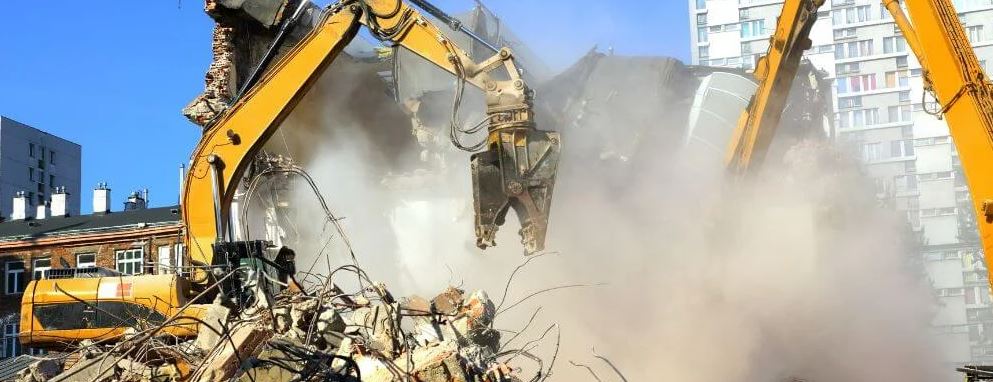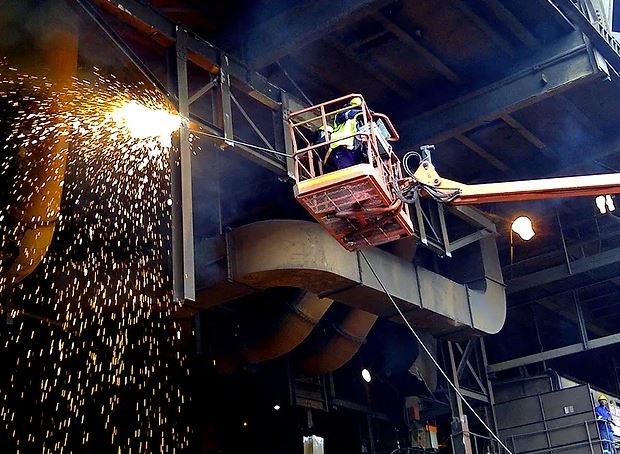Demolition Techniques 101: Exploring Different Methods for Commercial Projects
In the bustling world of the construction industry, the term ‘demolition’ often triggers images of tumbling walls, cascades of brick and mortar, and massive plumes of dust. However, these visuals only tell part of the story. Behind the scenes, demolition – particularly within commercial projects – is a well-orchestrated operation governed by strategic planning, stringent safety regulations, and a constant pursuit of efficiency and sustainability.
Commercial demolition, in particular, holds an essential place in urban development and progress. Commercial demolition is the silent but powerful engine driving change in our urban landscapes, from making way for modern skyscrapers to clearing space for expansive infrastructure projects.

This blog post will delve into the intricacies of this vital operation, exploring the various demolition methods commonly used in commercial projects. We will examine traditional demolition techniques like the heavy equipment method and hydraulic pusher arm while also focusing on more innovative approaches like high-reach arm demolition, implosion, and deconstruction. Furthermore, we’ll touch upon the exciting emerging technologies reshaping the demolition landscape.
By unravelling these different demolition techniques, we aim to provide a comprehensive guide that will help construction professionals and curious readers understand the strategic, technical, and environmental considerations that come into play in commercial demolition. So, buckle up and prepare for an explosive exploration of the world of commercial demolition!
Understanding the Commercial Demolition Process
Choosing the most appropriate method for a commercial demolition project is no small feat. Several key factors can influence this decision, such as the building’s size, location, materials used in its construction, the project’s budget, timeline, and safety and environmental considerations. A thorough understanding of these factors is necessary to select the optimal demolition method. Professionals like www.demolitionsbrisbane.com.au usually possess this understanding.
Planning and preparation are also crucial in commercial demolition. Careful surveying of the structure, determining the materials present, creating a project timeline, and setting safety protocols are all key planning elements. Preparation also includes obtaining the necessary permits and making arrangements for waste disposal.
Environmental considerations also play an essential role. Demolition activities can generate substantial amounts of waste and potentially release hazardous substances. Therefore, environmental impact assessments and plans for minimizing waste are necessary. For instance, recycling or reusing materials can significantly reduce the environmental footprint.
Last but certainly not least, safety is paramount in commercial demolition. With the inherent risks, strict safety protocols must be established and followed, including protective equipment, worker training, and emergency response planning.
Traditional Demolition Methods
The wrecking ball or heavy equipment method is a classic image of demolition. A crane swings a heavy wrecking ball into the structure, or large hydraulic equipment is used to dismantle the building. This method is cost-effective and simple but requires more precision and is relatively slow for large structures.
The hydraulic pusher arm is another conventional method, particularly for low-rise buildings. This method involves using a large machine with a hydraulic arm to ‘push’ the structure over. While efficient, it also requires a large clearing area for safety.
Innovative Demolition Methods
In innovative demolition, the high-reach arm demolition technique stands out. This method uses a base machine fitted with a long demolition arm to ‘pick apart’ the building, usually from the top down. It offers more precision and safety than traditional methods but can be costlier.
Explosive or implosion methods involve using explosives to bring down a structure. This technique is quick and efficient, suitable for large structures where other methods might be impractical. However, due to the potential risks involved, it requires a high level of expertise and stringent safety measures.
Selective demolition, or deconstruction, is carefully dismantling a structure to preserve components for reuse. This technique aligns with sustainability and waste reduction principles but can be time-consuming and labour-intensive.
Emerging Technologies in Commercial Demolition
Technological advances are reshaping the field of demolition. Robotic demolition, for instance, involves using remotely controlled mini machines equipped with tools like hammers, crushers, or buckets. These robots can access areas too dangerous for human workers and perform tasks more precisely.
Laser technology is also gaining traction. Lasers can be cut through concrete and steel, making them useful in demolition. However, the application is still in its early stages and requires further development.
Drones are another emerging technology. They can provide aerial views of the site, assist in surveys, monitor progress, and even help in the actual demolition process in some cases.
Legal and Environmental Concerns
Compliance with legal requirements is critical in commercial demolition. Regulations cover safety, waste disposal, noise, dust, and vibration controls. If necessary, there are also legal requirements for asbestos surveys and removal in many regions.

Demolition can have significant environmental impacts, including waste generation, dust and noise pollution, and potentially releasing hazardous materials. Therefore, strategies to minimize these impacts, such as waste recycling, noise and dust control measures, and careful handling of hazardous materials, are important aspects of responsible demolition.
Commercial demolition is a complex, multifaceted process that requires careful consideration of various factors, techniques, and emerging technologies. Balancing efficiency, safety, legality, and environmental responsibility is a challenging task but is crucial for the successful execution of any demolition project.
In our exploration of commercial demolition, we’ve unravelled various methodologies that reflect this essential operation’s complex nature. From traditional techniques like the wrecking ball or heavy equipment method and the hydraulic pusher arm to more innovative practices like high-reach arm demolition, implosion, and selective demolition or deconstruction, each carries advantages and ideal applications.
Emerging technologies are also shaping the future of this field, with robotic demolition, laser technology, and drones offering exciting possibilities. These advancements enhance precision, safety, and efficiency, making demolition processes more streamlined.
Choosing the right method for each project is a crucial step that weighs heavily on factors like the structure’s size and material, project timeline, budget, environmental considerations, and safety concerns. This choice can significantly impact the project’s overall success, impacting everything from the speed of completion to the environmental footprint.
As we look to the future, we expect commercial demolition to continue evolving and innovating. With an increasing focus on sustainability, waste reduction, and digital technology, the field of commercial demolition will likely see a shift toward methods that minimize environmental impact, enhance safety, and harness the power of technology for precision and efficiency.
In conclusion, despite its destructive nature, commercial demolition plays an integral role in fostering urban development and progress. Understanding its various aspects and methods is key for construction professionals and those interested in this unique, powerful, and transformative industry.